Book Review & Interview | Brewed in Michigan
Brewed in Michigan: The New Golden Age of Brewing in the Great Beer State (Wayne State University Press, 2017) by William Rapai
It is possible in 2017 to find good beer and exciting breweries in every state in the union. Gone are the days of large beer deserts in this country; you might just have to look at little more diligently in some states than others. Still, a few states rise above the rest with an embarrassing wealth of great breweries both old and new. Michigan is one of those states, and if you need any persuading, a new book by William Rapai aims to quiet your objections.
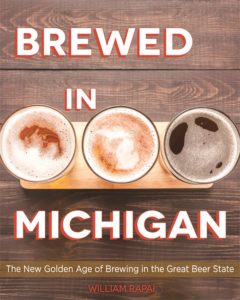 In Brewed in Michigan, Rapai takes us on a tour of the Wolverine state, walking us through the history of the state’s craft beer movement from its earliest whispers to today’s bustling industry, and showcasing almost three dozen breweries and the men and women behind them. He does a bit of Michigan grandstanding along the way, making claims I’m sure any state’s brewers and drinkers would make about their own part of the country, but he can be forgiven for that when we look at the embarrassment of riches he’s been spoiled on as a Michigander.
In Brewed in Michigan, Rapai takes us on a tour of the Wolverine state, walking us through the history of the state’s craft beer movement from its earliest whispers to today’s bustling industry, and showcasing almost three dozen breweries and the men and women behind them. He does a bit of Michigan grandstanding along the way, making claims I’m sure any state’s brewers and drinkers would make about their own part of the country, but he can be forgiven for that when we look at the embarrassment of riches he’s been spoiled on as a Michigander.
Rapai is at his strongest when he’s telling stories, and the best parts of Brewed in Michigan are those that focus on Michigan’s craft brewing history and the personal stories of breweries and brewers. Rapai takes us inside each of his featured establishments, and helps us understand each not only in the context of Michigan’s larger scene, but of the local scene each belongs to. Not all small towns and regional cities are the same, and craft breweries grow from different soils and effect their local economic and cultural ecosystems differently. Rapai does a great job placing us in those different scenarios and helping us see how a brewery is tied to its locality.
Whether you’re from the Great Lakes region or you’ve never set foot on Michigan soil, you’ll enjoy this book for the way it gets to the heart of the craft brewing industry and how breweries become part of the local fabric they were stitched from. The land of Founders KBS and Bell’s Two-Hearted Ale is a microcosm of the craft brewing scene around the country, and Brewed in Michigan is a worthy read wherever you call home.
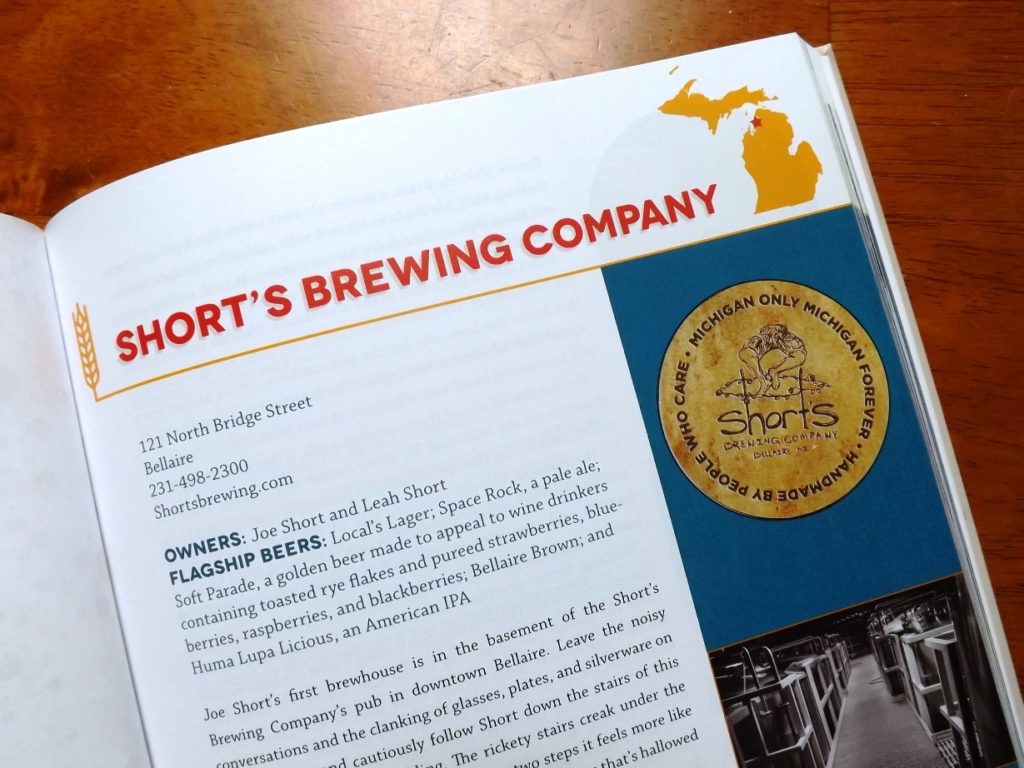
I recently had a chance to talk with William (Bill) Rapai about Brewed in Michigan, what makes beer from his state so special, and his favorite Michigan beers.
PD: What is your background in beer?
William Rapai: I have no particular background in beer. This book is the result of my love for beer, the state where I live, and my curiosity. In my early 20s, I spent a lot of time experimenting with beer, trying every brand and style I could find in Detroit. As you can imagine, the pickings were pretty thin back in the early 1980s. There were the big national brands, a few regional brands, and a few imports from Europe, which were either stale or light-struck.
I tried my first Michigan craft beer back in the late 1980s—a Tom Boy Red from Local Color Brewing in Novi, Michigan, and… it was terrible. Looking back at that experience, I was hesitant for a long time to give Michigan beer another try. I rejoined the craft brewing scene in late 1990s when I was living in Massachusetts and working for the Boston Globe. While there, I discovered Catamount and Harpoon. And even though it was not brewed in New England, I discovered Pete’s Wicked Ale just about the same time that brewery was going bankrupt. Coincidentally, while I was living in Boston, the second wave of Michigan beer was kicking in and new breweries were opening all over the state. That was the wave that gave us Founders and Dark Horse.
Give me an elevator pitch for why Michigan is the best beer state (and no cheating with claims that are true for brewers around the country!)
Michigan is better for two reasons:
Water. We have the best water for making beer. Coors has Rocky Mountain stream water but that’s just a marketing thing. Before anyone in Golden can brew with it, the water has to be significantly treated to remove the iron, sulfur, calcium and all that other stuff the water picks up. Brewers in Michigan rave about how great the water from the Great Lakes is for making beer. Brewers still tweak the water depending upon what they brew, but they are starting from a much better place.
Agriculture. Besides water, Michigan has everything you need to make great beer – barley, hops, and yeast. That’s not to mention all the other great locally grown agricultural products that the state’s most creative brewers use—blueberries, cherries, peaches, asparagus, melons, cucumbers, honey… It’s a pretty long list.
What do you foresee changing in the Michigan beer scene in the next five years?
One reason the Michigan beer scene so great is because of the people who left their day jobs as executives, database analysts, police officers and laborers because they needed to make beer. It’s not something they did because they wanted to make a fast buck; they needed to follow their passions. They did it for the right reasons.
That said, two things concern me about the next five years.
The first is, the big money is flooding into the craft brewing industry. Today people are getting into craft beer for the wrong reasons. You know when hedge fund guys and wealthy urologists are putting up money to open a brewery that they are not being motivated by the same passion. They are going to be looking for a return on their investment and it’s unlikely that they will be as patient as someone who is following his/her passion.
The second is consolidation. Michigan’s brewers have not been immune from this pressure, but they have handled it pretty well. The owners of Founders and Short’s have sold portions of their companies, but they seemed to do so for the right reason; they were looking to expand their footprint/distribution and not have a huge payday by selling their souls.
That said, competition is going to get vicious in the coming five years. There is only so much space on a store’s shelves and the risk is that brewers are going to be willing to lower their quality standards to improve margins and undercut the competition. Michigan is no different from any other mature beer state in that respect. Fingers crossed!
Which breweries surprised you most when you visited them for this book?
Pigeon Hill in Muskegon. Have you ever walked in the door to a place and immediately felt at home? Pigeon Hill is like that for me. It’s comfortable. I love the scale, the warm tones and sense of history.
Cedar Springs Brewing Company in Cedar Springs. David Ringler prefers not to be called the owner; he prefers Director of Happiness. Ringler played American football in Germany, and in the off-season he worked in German breweries. He brought back his knowledge of German beers and the feeling of a German beer hall and plopped it down in a small town north of Grand Rapids. Not only does it work, it’s lead to a renaissance of the town and made it a destination for beer lovers in western Michigan.
New Holland Brewing. Holland, Michigan, is a small town southwest of Grand Rapids that is particularly known for its conservative ways. When I was an intern at the Holland Sentinel back in 1983, I had to drive to the next county to buy beer on Sunday. Now alcohol has become a major part of the city’s economy. There are breweries and distilleries and they have become a major tourism draw. Even on Sundays. Holland is the last place I would have imagined that beer would have had such a huge impact on the economy and culture.
Stormcloud Brewing Company in Frankfort. I was amazed by how quickly Stormcloud was adopted by the community. Local residents simply refer to it as “The Cloud.” Sit on the patio on a beautiful northern Michigan summer evening and you will understand. It doesn’t hurt that they make damn good Belgian-style beers.
Ore Dock in Marquette. Walk in and sit down. Order a beer. Look around. It’s like most other brewpubs in a college town (Northern Michigan University). But grab that beer and go upstairs. This space was at one time an auto repair business/body shop. Huge wooden beams. Wooden plank floor with burn marks from welding torches. Sandstone walls. Booths made from reclaimed materials. You would never know that this special place was here if you just stayed on the first floor.
If an out-of-state visitor were to plan a weekend beer trip to a Michigan city or local region, which city or region would you send them to first?
Just one region? I can’t do that! The problem is there are so many good breweries with different philosophies brewing different styles that I cannot recommend just one. My suggestion would be to take several days and tour the state. Enter Michigan on I-94 from Indiana and work your way around the Lower Peninsula clockwise. It would be a tour of good beer and cool towns. Start with Greenbush in Sawyer and work your way north along the Lake Michigan shore with stops in Saugatuck, Holland, the Grand Rapids area, Rockford, Cedar Springs, Muskegon, Frankfort, Traverse City, Bellaire, and Petoskey. Work your way south on U.S. 23 on the east side of the state with stops in Cheboygan, Alpena, Oscoda, Bay City, Frankenmuth, Lapeer, Detroit, Ann Arbor, Marshall, Kalamazoo Paw Paw, and back to Indiana. Or go in reverse order entering Michigan from Ohio.
I was fascinated to learn about Emily Geiger’s work at Craft Cultures, isolating and propagating unique Michigan yeast strains. Do you have some examples of breweries using these strains? Have you tried any beer brewed with them?
Yes! Steve Bertel the pub brewer at New Holland’s Pub on 8th uses about 90 percent Michigan-sourced ingredients. (That is not necessarily the case for the production brewery). I have not talked with Bertel in over a year so I don’t know what they’re doing with production these days.
Bertel made a commitment to source as many ingredients from local producers as possible. I have had the MI Dream Belgian IPA made with all Michigan ingredients. Pretty damn good.
I know of one other brewery that uses yeast from Craft Cultures, and that’s Rockford Brewing Company, which is near Grand Rapids. I have never been there, but I hope to stop there tomorrow on my way to Manistee.
By the way, Rockford Brewing Co. was just named small brewpub of the year at GABF. It’s the yeast. I’m sure of it.
In your book’s conclusion, you explain some potential problems facing the Michigan beer scene, including a potential drop in quality as the craft scene rapidly expands, the problem of succession for the old guard of founding brewers, and an erosion in the camaraderie that has so long defined Michigan (and U.S.) craft brewers. In talking with brewers, do you get a sense of a way forward through these problems? What needs to happen for brewers in Michigan and elsewhere to weather these potential storms?
First off, nobody can predict the future and I am not going to try to do so here.
It’s going to be an interesting few years coming up as people who have been in the industry for a while start to look for exit strategies. Do they sell? If so, to whom? AB InBev can’t possibly buy every small brewery and add them to their portfolio (or buy them to put them out of business). I do believe that many of the medium-to-large independent brewers in the state will resist selling to AB InBev simply because they remember how they were insulted by Budweiser brand reps. (If you are unfamiliar, ask a brewer sometime about how the Bud brand reps would come in to their places, order a beer and then talk loudly about how bad it was. On their way out, they’d leave a case of Bud and a “you don’t know what you’re doing” note.)
Surprisingly, I think the smallest brewers are in the best position. Those are the guys who are making beer inside a restaurant. They may sell beer by the growler, but they don’t distribute. I think those guys who have kept their scale small will be most immune from the pressures. I see two survival strategies in a difficult, mature market. First is to continue to grow market share. You do that by persuading consumers to choose your product over a different one. (Good luck with that.) The other is to provide a special high-end niche product. That may be the direction for a brewery like Founders.
If you could go back to one taproom you visited while writing this book and have a pint right now, which would you choose and why?
I hate you.
Finally, let’s end this with the hardest question of all. What are you five favorite Michigan beers if you’re forced to choose?
In no particular order:
Final Absolution from Dragonmead.
Backwoods Bastard from Founders.
Oberon from Bell’s (the summertime default beer at my house).
Küsterer Heller Weißbier from Cedar Springs Brewing in Cedar Springs.
Tie: Two Hearted Ale from Bell’s and Norm’s Raggedy Ass IPA from Griffin Claw.
But there are so many more that I need to try!


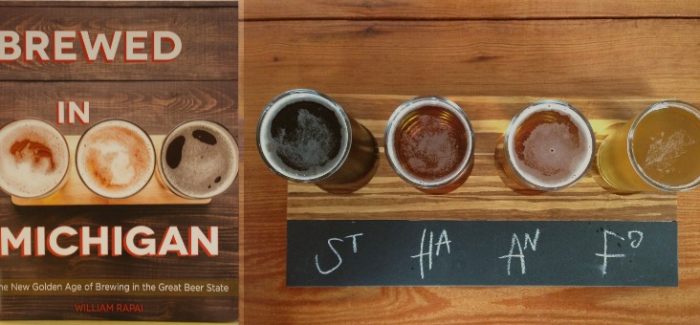

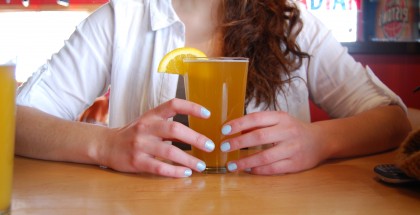
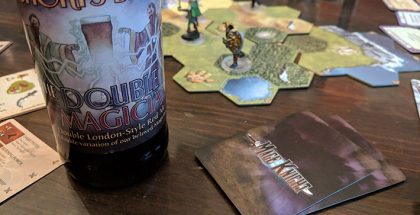
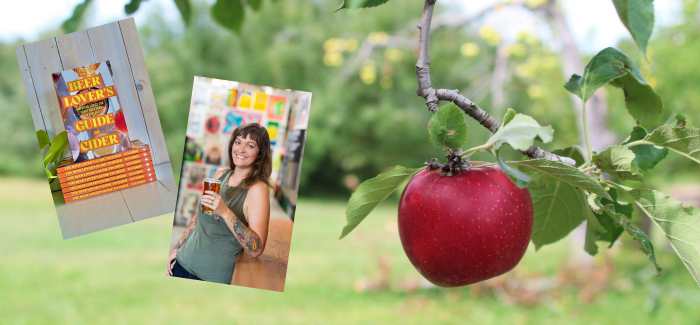
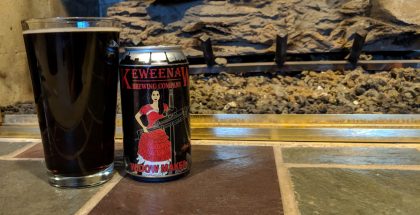

Submit a Comment